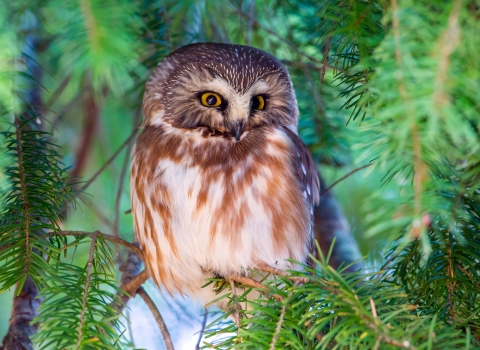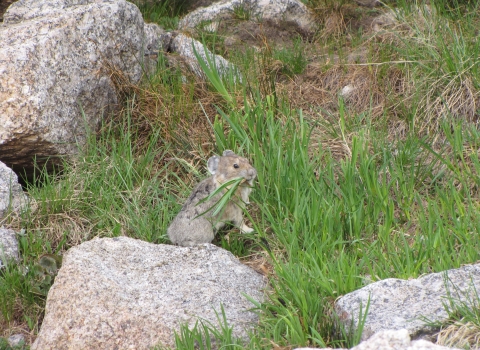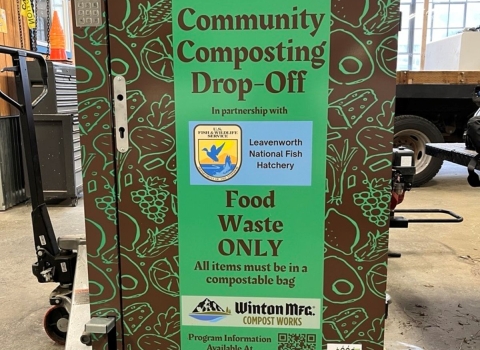Bering cisco are the type of fish you see and say “Yup, that’s a fish” and continue with your day. They have that classic, but common fish look: silvery and fusiform. They’re not impressively huge either, fitting easily into two hands like a breakfast burrito. At one pound, they weigh about the same, too.
While they don’t share the iconic status of their Pacific salmon cousins, they’re truly “Alaska’s fish” in that there are only three known spawning populations of Bering Cisco in the world and all occur in Alaska. This Alaskan has, however, made its way into the busy kosher markets of New York City. And this is what makes their story incredible.
When they’re not spawning in the Yukon, Kuskokwim, and Susitna rivers, they’re moving between coastal marine estuaries and lagoons from the Colville Delta in the Beaufort Sea, south to the Alaska Peninsula and Cook Inlet. Their journeys can take them hundreds and even thousands of miles.
Alaska Native peoples and rural residents look to Bering Cisco and other related whitefishes as local sources of protein and a nexus for coming together to harvest and preserve wild foods, share meals, and pass on traditions. In coastal areas, gillnets are used to catch Bering cisco. However, when they’re migrating upstream to spawn, they are most often captured with fishwheels.
These large floating contraptions are held offshore in a river with two large baskets that rotate around in the current and scoop up fish. Where Bering cisco live, regional subsistence harvests of wild foods average nearly 400 pounds per person annually, with the majority being fish.
So how did this unassuming Alaskan find itself in the Big Apple?
Their high fat content has something to do with it. With the decline of deep-water cisco populations in the Laurentian Great Lakes, demand for a similar product from the New York kosher market triggered the first commercial fishery for Alaska’s Yukon River Bering cisco in the mid-2000s.
Yu’pik fishermen catch Bering cisco with gillnets in the lower Yukon River where it meets the Bering Sea. They take their catch to the community of Emmonak to be frozen and then shipped to Brooklyn to be smoked.
Initially, Alaska Department of Fish and Game fisheries managers were conservative setting the annual commercial harvest quota at 10,000 fish — a nod to needing more robust information about the Yukon River population. As the commercial fishery matured and market demand intensified, harvesters annually requested increased harvest quotas. Recognizing the economic opportunity for the region, managers cautiously increased the quota through the early 2010s to 25,000 fish.
As harvest pressure increased, managers became increasingly mindful of the need to understand the three stocks and their abundance. This piqued the interest of U.S. Fish and Wildlife Service fish biologist Randy Brown, stationed at the Fairbanks Fish and Wildlife Conservation Office, who came to Alaska at the age of 17 and for the past couple decades, has dedicated himself to filling information gaps about anadromous fish populations that are important to subsistence users in northern and western Alaska.
Randy was among the first to recognize that Bering cisco were endemic to Alaska. Also that whitefish species were extremely important to subsistence users along the western and northern coasts of Alaska and the Yukon River, and that an expanding commercial fishery in the lower Yukon River could potentially affect both the species and subsistence users. Additionally, he recognized there was little known about the species and its three uniquely Alaska stocks.
So he implanted individually coded radio tags (above) into fish to locate the Yukon population’s spawning destination. The results indicated the population spawned within Yukon Flats National Wildlife Refuge.
With the spawning area identified, the next step was confirming the origin of fish captured in the commercial fishery. This would allow managers to regulate harvest more accurately as a single stock fishery or a mixed stock fishery made up of fish from more than one population. DNA and the chemistry of the inner ear bones (otoliths) of harvested fish helped answer this question.
A collaborative effort between Ora Russ, a geneticist with the U.S. Fish and Wildlife Service, and Andy Padilla, a biologist with the Alaska Department of Fish and Game, concluded that more than 95% of the fish sampled from the commercial fishery were of Yukon River origin with few or no Kuskokwim or Susitna fish.
Nearly identical results from the genetics and otolith chemistry projects provided overwhelming evidence that the Yukon stock dominated harvest in the commercial fishery and that it was likely considerably larger than the others. This greatly lessened the chance that other stocks would be intercepted. Both projects presented further support for the existence of only three populations and provided insights about ancestral relationships and geographic distribution among them.
Although management of the fishery could now proceed with the assurance of targeting only a single stock, an estimate of abundance could further improve conservation of the fishery. This led Brown to collaborate again with state fisheries biologists on a rigorous mark-recapture experiment estimating the number of spawners on the spawning grounds. The estimates found that previous and current levels of commercial harvests have not, and likely will not negatively affect the population. With the addition of the abundance estimate, managers now have a statistically sound, efficient, and repeatable method to periodically gain insights about the direct effects of the commercial fishery and, over time, develop optimum exploitation levels.
So if you ever find yourself in New York and find a smoked gold cisco with rich, white flesh within, be sure to pause and think of the shimmery silver long-distance swimmers in Alaska and the science behind the fillet.
More episodes featuring Randy Brown:
More whitefish episodes:
We honor, thank, and celebrate the whole community — individuals, Tribes, the State of Alaska, sister agencies, fish enthusiasts, scientists, and others — who have elevated our understanding and love, as people and professionals, of all the fish. In Alaska we are shared stewards of world renowned natural resources and our nation’s last true wild places. Our hope is that each generation has the opportunity to live with, live from, discover and enjoy the wildness of this awe-inspiring land and the people who love and depend on it.
Follow us: FacebookTwitterApple Podcasts






